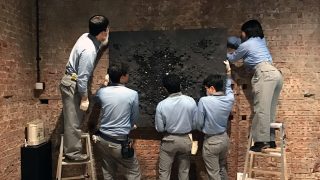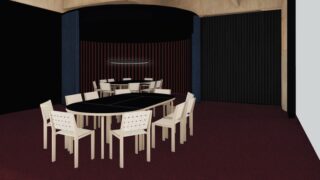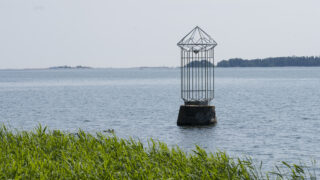Espoo Museum of Modern Art
Rut Bryk exhibition opened in Tokyo and presents Bryk's work from five decades


Rut Bryk: Touch of a Butterfly touring exhibition will be seen in four museums in Japan during 2019–2020. The exhibition gives and in-depth look into the extensive career of Rut Bryk (1916–1999). With her works that convey incredible powerful emotion and intense sensitivity, she was a reformer of modern ceramic art. Her early colourful narrative works were followed by a period monumental works with a strong sense of spatiality and close kinship with architecture.
Rut Bryk: Touch of a Butterfly opened for public on Saturday 27th April at Tokyo Station Gallery marking the beginning of the exhibition tour in Japan. There are roughly 200 works on display, the majority of which are from the Tapio Wirkkala Rut Bryk Foundation Collection.
The exhibition is divided into five chapters:
Dream and Memories
Rut Bryk began her career as an illustrator and textile designer. Her early compositions are infused with great human warmth; some also portray sad events from her childhood. Her earliest ceramic works depict dream-like visions and whimsical vignettes of everyday life, often harking back to childhood memories. Her style is relaxed and painterly, highlighting subjects such as myths, human figures, animals and plant motifs. Initially she decorated ceramic objects by other artists, but gradually began producing her own plaques autonomously.
Colour Magic
Between 1948 and 1950, Bryk began experimenting with a new slipcasting technique similar to printmaking. Using a plaster mould, she was able to produce multiple variations and colour versions of her plaque compositions. Her subject matter again consisted mainly of stylized still lifes, scenes of family life and childhood memories. First she carved the image onto a plaster plate that served as the mould. When the slip was poured into the mould, the engraved contours would pop out in relief, providing a containing device for glazes applied thickly in a glowing array of radiant colours. Although the mould was reused, each plaque was a one-off. Occasionally Bryk cropped the clay into inventive shapes.
Towards Spatiality
In the late 1950s, Bryk began assembling large reliefs from numerous small tiles. She designed modular prototype tiles that could be mixed and matched to create a large mosaic-like composition. The individual tiles were decorated with abstract or figurative patterns, engravings, different colour effects and even industrial transfers. Her works grew progressively larger, taking command of the space around them. The butterfly motif held personal significance for Bryk, as her father was a lepidopterist. Over time, however, the thematic content of her art grew less personal and more universal. A turning point came with the debut of The City (cat.no. 3-33) the Brussels World’s Fair in 1958. This work consists of tiles arranged horizontally on a flat surface. Her first true monumental piece, The Banquet Table (1961), hangs in the Rosenthal porcelain factory in Germany. Bryk used the same background tiles in her later works; details are also featured in this exhibition.
Sic Parvis Magna
Using a modular system, Bryk constructed large tile reliefs and monumental pieces for prominent public venues. The giant reliefs were extremely time-consuming to assemble, and Bryk took great pains in perfecting each composition. The relief took shape on the floor of the studio: at intervals, she would climb a ladder to view the overall effect and keep rearranging the tiles until each one found its perfect spot. In the late 1960s she began combining white tiles with fresh, bright primaries in Pop-inspired shades resembling plastic or enamel in their glossy finish. She also created dark, murky reliefs punctuated by random splashes of colour, like neon lights flashing in a big city at night.
Harmony of Light
From the 1970s onwards, Bryk immersed herself in the challenge of translating light and shadow into three-dimensional ceramic planes. Her tiles grew simpler and more geometrical, and her palette more monochrome, creating an effect of weightless immateriality. Revolving around light, space and time, her work captured a fleeting sense of ephemerality. The purity and sensory intensity of Nordic nature is captured to striking effect particularly in her last work, Ice Flow (1991), a monumental relief commissioned for the residence of the Finnish president.
Exhibition touring schedule:
Tokyo Station Gallery 27th April – 16th June 2019
Itami City Museum of Art 7 September – 20 October 2019
Museum of Modern Ceramic Art, Gifu 25 April – 5 July 2020
Kurume City Art Museum 18 July – 6 September 2020
The exhibition has been co-produced by EMMA, Tapio Wirkkala Rut Bryk Foundation and the Japanese company Blue Sheep.


